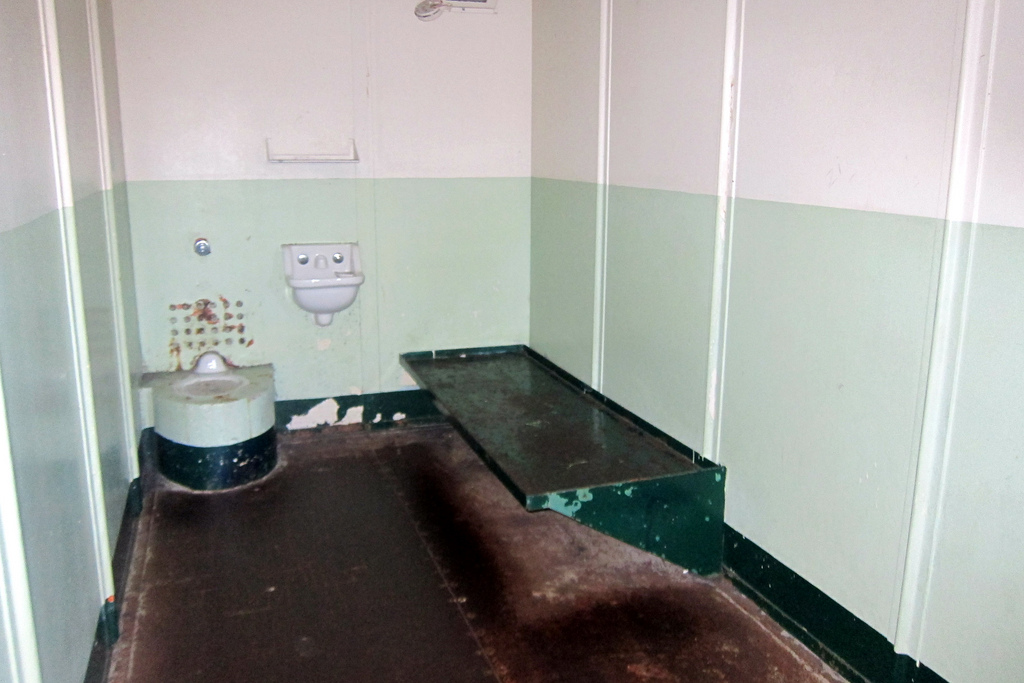On July 31, 2009, American journalist Sarah Shourd was hiking in Northern Iraq with friends when she was captured by Iranian soldiers and placed in solitary confinement. She spent the next 410 days in a tiny metal cell, pacing around her cage and staring up at bright fluorescent lights that never turned off. “After just two months my mind began to slip…There was a slow disintegration of my personality, my sense of who I was,” Shourd recounts in an interview with the American Civil Liberties Union. “I knew that isolating a person was a cruel form of punishment. Still, it was not until I experienced it myself that I realized it was torture,” she added.
Countless Americans taken hostage have attested to the torture of solitary confinement. Senator John McCain, spent more than two years in isolation as a prisoner of war in Vietnam. Subjected to regular beatings, denied adequate medical treatment for chronic dysentery, and tortured to the point of bones breaking, McCain reported that solitary “crushes your spirit and weakens your resistance more effectively than any other form of mistreatment.”
As human beings with a sense of compassion and empathy, the media, the government, and the public at large provide individuals taken hostage with the greatest support. They become heroes and role models. McCain was awarded with a Purple Heart, a Bronze Star Medal, and a Silver Star when he returned, and Sarah Shourd was interviewed by NBC, Oprah Winfrey, and the Huffington Post. But what of the 80,000 criminals being held in solitary confinement across America at this very moment? They may not deserve our admiration, per se, but their circumstances certainly deserve our attention.
Shourd’s experience in solitary confinement is quite similar to the typical conditions of so-called super maximum prisons: high security prison systems designed to isolate prisoners from social contact. In fact, journalist Shane Bauer, who was captured alongside Shourd and spent four months in solitary, visited California’s Pelican Bay State Prison and found conditions to be even worse. “I had a mattress, and they have thin pieces of foam…I got 15 minutes of phone calls in 26 months, and they get none,” he wrote in an article. “Here, there are no windows.”
A typical supermax cell is around 11 by 7 feet. A 4-inch thick concrete slab serves as a bed and an even smaller slab serves as a desk. There is a toilet, a metal sink, and a speaker with a microphone mounted on the door to allow for faceless interactions with correctional officers. Prisoners are usually confined to their cells for 23 hours a day and permitted out only for “recreation” in an outdoor cage (known as ‘the dog kennel’) or a shower. The worst part, according to those who have lived in solitary, is not necessarily the small metal cell or the unpalatable “food brick” served as every meal, but rather the lack of social contact.
The harmful psychological consequences of solitary confinement are well documented. Psychologists who study this issue have found a broad range of harmful psychological reactions for those kept in isolation including anxiety, panic, rage, paranoia, hallucinations, self-mutilations, and suicidal ideation and behavior. Letters written by New York State prisoners lend a voice to these clinical findings: “I feel like I am developing some kind of skitsophrinia [sic] behaviors….I hear voices echoing as I try to fall asleep,” one man wrote. Another wrote that his mind “rots” with “thoughts that are uncommon or unnatural.”
Solitary confinement may then qualify as “cruel and unusual punishment” by most standards, and yet the Supreme Court refuses to consider such treatment unconstitutional. Millions of Americans cling fervently to the Constitution as the backbone of the American government, citing it, for example, as a valid reason to own a semi-automatic rifle or a flamethrower. Yet, when it comes to society’s underclass of prisoners, these same Americans are silent. One person’s constitutional right to own a gun has become more important that another person’s constitutional right to not endure torture.
The purpose of the supermax segregation unit is to supposedly cull out the worst of the worst from the prison population in order to reduce violence and disorder. Prisoners may be placed in supermax for a number of reasons, ranging from attempted escape and potential gang membership to prisoner assault and extreme violence. Advocates of solitary confinement argue that there is no other place for these individuals — they are violent, disruptive, and too dangerous to be housed with others. Yet, a 2003 analysis that examined the effect of supermax following its implementation across several states found that levels of inmate-on-inmate violence were unchanged and that there was no correlation with levels of inmate-on-staff violence, with rates rising in some states and falling in others. And in June of 2006, a bipartisan national task force released a report calling for the termination of long-term isolation of prisoners, noting that a number of studies have demonstrated that supermax conditions if anything make it more likely that prisoners will commit crimes when they are released.
There is no clear benefit that comes with solitary confinement. It seems not only unconstitutional, but also simply unethical. After all, Americans have no problem condemning it when done to hostages overseas. Fortunately, a growing number of legislators and human rights groups are beginning to take notice. In July 2015, President Obama became the first president to visit a US prison and question the use of solitary, and on September 1, 2015, the state of California agreed to a landmark settlement of a class action law suit on behalf of prisoners in solitary at the Pelican Bay prison. The agreement will dramatically reduce the current solitary confinement population in California and cap the length of time a prisoner can spend in solitary. Ideally, the rest of America will follow suit.
